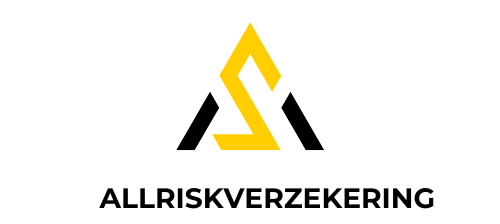As you venture into the world of modern manufacturing, you’ll constantly find yourself grappling with the idea of advanced robotics. A technology that has revolutionized the industry, advanced robotics has become the backbone of production systems. It has led to a dramatic increase in efficiency, quality, and customization in mass manufacturing, while also reducing human labor needs.
In this article, we delve deep into this fascinating intersection of robotics and manufacturing. We uncover how manufacturers are leveraging robotics to automate tasks, enhance product quality, and meet the rising demand for customized products. Let’s get started.
Additional reading : How is Virtual Reality Technology Enhancing Remote Collaboration in Design?
The Intersection of Robotics and Automation in Manufacturing
The manufacturing industry has always been a front-runner in adopting and implementing new technologies. Advanced robotics and automation have been at the forefront of this evolution. An increasing number of manufacturing tasks, once reliant on human labor, are now being executed by robots. This shift not only increases production efficiency but also results in superior product quality.
Advanced robotics systems are armed with data analytics capabilities. They use this data to refine their operations, make informed decisions, and predict future production trends. Automation, on the other hand, is all about using technologies to control and monitor the production process. Together, robotics and automation create a robust, efficient, and technologically advanced manufacturing environment.
Also read : Can AI Predict and Prevent Unplanned Downtime in Manufacturing Facilities?
Bridging the Gap Between Mass Production and Customization
Advanced robotics has a vital role in finding the perfect balance between mass production and customization. In today’s market, consumers demand products tailored to their specific needs and preferences. Catering to this demand while maintaining the efficiency and cost-effectiveness of mass production is a tough challenge.
Fortunately, advanced robotic systems have made this possible. These robots are capable of understanding and executing complex tasks that produce customized products. Even better, they can do so without compromising on the speed and efficiency associated with mass production. This unique ability has made advanced robotics an indispensable asset for manufacturers.
Enhancing the Quality of Products Through Advanced Robotics
Quality is a key determinant of success in the manufacturing industry. Thanks to advanced robotics, manufacturers now have the opportunity to enhance product quality like never before. Robots equipped with high-precision tools and sensors can maintain a consistency in manufacturing that is often difficult to achieve with human labor.
Furthermore, the data collected by these robotic systems enables continuous improvement. Manufacturers can analyze this data to identify bottlenecks, track performance, and ensure an optimal level of quality. As a result, products manufactured with the help of advanced robotics are often superior to those produced using traditional methods.
Reducing Human Labor and Increasing Efficiency
A significant upside of using advanced robotics in mass manufacturing is the reduction in human labor. Robots are capable of working round the clock, without breaks or downtime. This not only increases production efficiency but also leads to significant cost savings.
Robotic systems can handle repetitive tasks, dangerous operations, and heavy lifting that would be challenging and risky for humans. By taking on these tasks, robots free up human workers to focus on more complex and creative aspects of the production process. Here, the role of advanced robotics is not to replace human labor but to augment it, creating a more efficient and safe manufacturing environment.
The Future of Manufacturing with Advanced Robotics
As we look towards the future, it’s clear that the role of advanced robotics in mass manufacturing will continue to grow. Manufacturers are constantly exploring new ways to harness the power of robotics to increase efficiency, improve quality, and meet the ever-changing demands of consumers. The customization capabilities of advanced robotic systems, combined with their ability to handle complex tasks, make them an ideal tool for tackling the challenges of the modern manufacturing industry.
While the technology behind advanced robotics continues to evolve, its core purpose will remain the same: to create a more efficient, flexible, and customer-focused manufacturing industry. As manufacturers, it’s your responsibility to stay abreast of these developments and understand how they can be applied to your operations. The future of manufacturing is here, and it’s more automated, efficient, and customizable than ever before.
Smart Manufacturing: A New Era Powered by Advanced Robotics and Artificial Intelligence
In the realm of smart manufacturing, advanced robotics and artificial intelligence (AI) have emerged as game-changers. These technologies, when deployed in unison, create a powerful synergy, transforming various aspects of the manufacturing industry.
Manufacturers, in particular, benefit from the integration of AI with advanced robotics. AI algorithms can optimize robotics manufacturing by allowing robots to learn from their experiences and improve their performance over time. This combination of learning and adaptation leads to improved efficiency, increased productivity, and a higher quality of output.
In addition, advanced robotics and AI help manufacturers achieve mass customization. They enable the swift and cost-effective production of customized products, meeting the unique needs of individual customers. This is a remarkable shift from the traditional one-size-fits-all approach to a more personalized, customer-centric model.
AI-powered collaborative robots, or cobots, are another innovation. They work alongside human workers, assisting them in complex tasks and ensuring safety. Cobots complement human skills, leading to increased productivity and improved quality control.
Moreover, the inclusion of AI and advanced robotics in the manufacturing process allows for real-time monitoring and control. This means that manufacturers can detect and rectify production anomalies swiftly, further enhancing the quality of the finished products.
In essence, the fusion of advanced robotics and AI is paving the way for smart manufacturing, a new paradigm characterized by efficiency, customization, and high-quality output.
Conclusion: The Intricacies and Future Prospects of Advanced Robotics in Mass Manufacturing
The role of advanced robotics in customized mass manufacturing is multifaceted and indispensable. It brings a distinctive blend of efficiency, quality control, and mass customization to the table, reshaping the manufacturing landscape.
The promise of automation manufacturing lies in its ability to revolutionize production processes. The integration of advanced robotics and AI allows for better control over manufacturing operations. Robots, equipped with artificial intelligence, can perform complex tasks with precision and consistency, ensuring high-quality outcomes.
Collaborative robots are at the forefront of this revolution, working alongside human workers to increase productivity and enhance safety standards. They mark a significant shift in the manufacturing industry, transforming the way we perceive and approach the concept of labor.
Moreover, advanced robotics opens up new avenues for mass customization. It allows manufacturers to cater to the unique demands of each customer without sacrificing efficiency or increasing costs. This level of customization was unheard of in the era of mass production, making it a significant milestone for the industry.
However, the journey does not end here. The evolution of advanced robotics and AI is ongoing. As these technologies continue to advance, we can expect them to bring even more transformative changes to the manufacturing industry. They offer countless opportunities for innovation, improvement, and growth.
The future of the manufacturing industry lies in embracing and harnessing these advancements. As manufacturers, we must stay informed about the latest developments in robotics and AI and understand how they can be applied to our operations. The revolution has just begun, and the possibilities are endless. The time to act is now. Let’s take the leap and transform the future of manufacturing together.
















